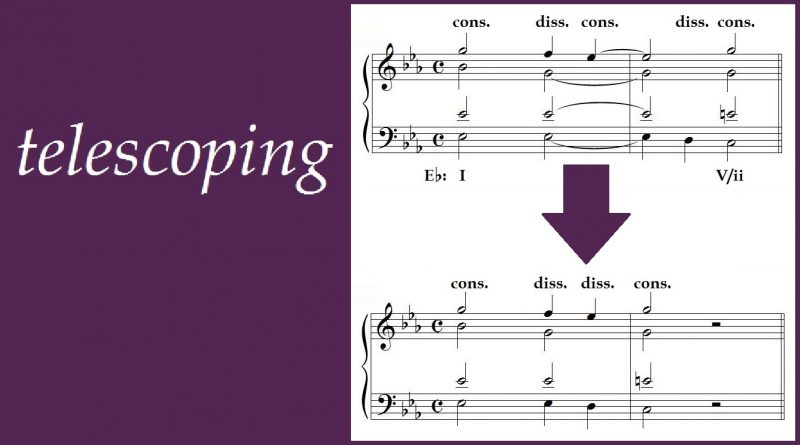Telescoping
My Lament for Flute and Piano was inspired by the stylistic innovations of early Baroque opera. The composers in this new genre consciously moved beyond the strict rules of Renaissance counterpoint, using dissonance more freely for purposes of dramatic expression. This freer use of dissonance was to become an enduring feature of musical style, lasting at least though the Romantic period.
In the strictest forms of counterpoint, dissonances are not only carefully prepared and resolved, but also carefully separated from one another. In the progression below, an accented passing tone appears in the soprano on the third beat of the first measure. It is resolved on the fourth beat. The momentary dissonance is prepared by a consonance and then resolved by another consonance. The second measure includes an unaccented passing tone in the bass, and this dissonance is again prepared by a consonance and resolved into a consonance.
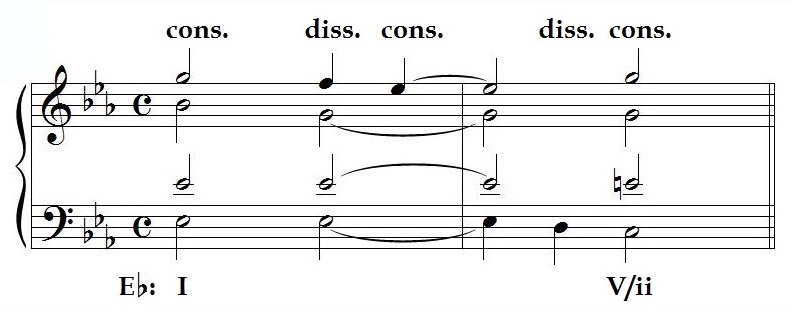
In a freer contrapuntal style, however, we can “telescope” the two dissonances by omitting the intervening consonance:
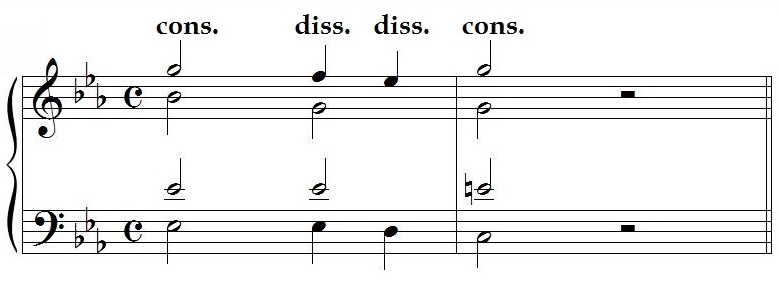
Here the accented passing tone in the soprano resolves to the same tone as before, but at the same moment that it does so, the bass moves to its own passing tone, so we hear two consecutive dissonances.
Can the listener’s ear still make sense of both dissonances? Well, if we take the pattern above and add a few embellishments, we get one of the most beloved passages in all of piano music:
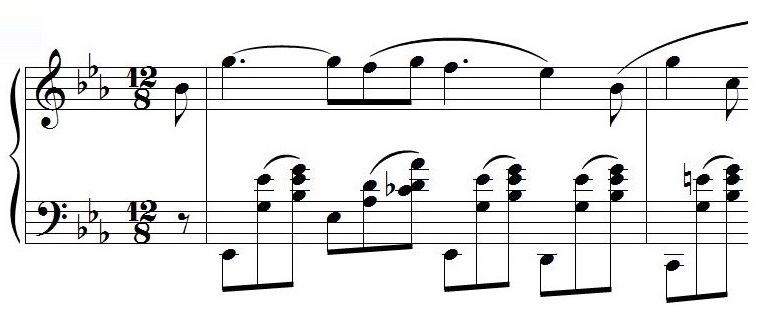
As you probably recognize, this passage is the opening of Chopin’s very popular Nocturne in E-flat major (Op. 9, No. 2). From all appearances, experienced listeners grasp what is happening harmonically in these famous measures of Chopin without difficulty. They do not describe them as unduly dissonant or confusing, only as beautiful and expressive. Here is a recording I made of the piece about three years ago.
My aforementioned Lament includes another intriguing instance of “telescoping.” The piece is in ABA form, and the B section ends in an extended flute cadenza over dominant harmony. The excerpt below starts in mid-measure, near the end of the cadenza.
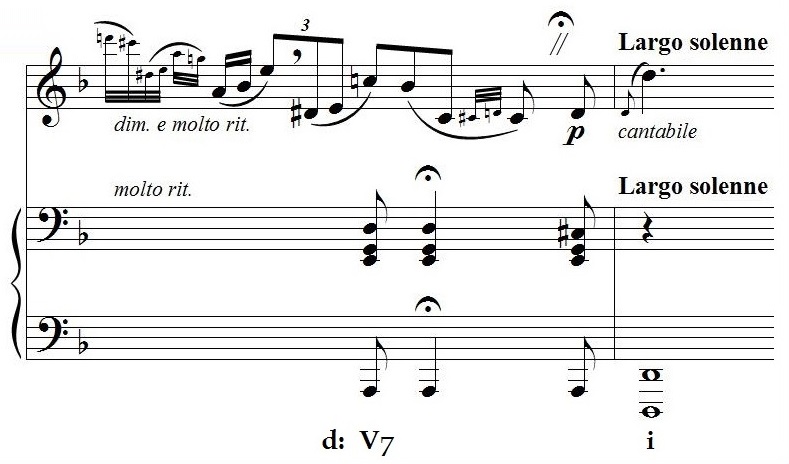
At the end of the cadenza, the flute finally comes to rest on the leading tone (C#). The piano, however, is still holding a suspension on tone D at that point. The suspension resolves in the normal fashion to C#. But just as the piano’s suspension resolves, the flute moves to tone D, creating a new dissonance. The D in the flute is an instance of the category of nonharmonic tone known as an “anticipation,” since it anticipates the D in the tonic harmony of the following downbeat. This “telescoping” of suspension and anticipation adds to the expressiveness of the passage, and can probably be sorted out more easily by the listener’s ear because of the contrasting timbres between the flute and the piano’s low register.
The passage begins at bar 59 (around 5:25 into the video).

